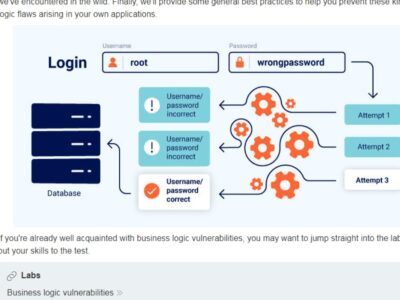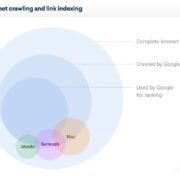Do you think cybercriminals are technical experts? With an annual revenue of over $1.6 billion per year, cybercrime as a service answers it best. Discover CAAS, the main techniques to deploy the service, mitigation and some real-life incidents.
Understanding CAAS
Cyber Crime as a Service” (CaaS) refers to a criminal model where cybercriminals provide various cybercrime-related services and tools to other individuals or groups for payment.
These services could include distributed denial of service (DDoS) attacks, hacking tools, stolen data, etc. It’s a way for non-technical individuals to access and utilize cybercriminal expertise and resources for malicious activities.
Cybercrime as-a-service (CAAS): Key players
The CaaS business model resembles the legitimate SaaS approach, where you pay a subscription or fixed fee to access software online. However, in the case of CaaS, the software is used for illegal activities rather than legitimate ones.
CaaS providers offer various services that differ based on their expertise and specialization. Some common CaaS types include:
Malware-as-a-Service (MaaS)
This entails selling or renting malware software like ransomware, spyware, keyloggers, trojans, and worms. The malware can be tailored to customer preferences.
For instance, ransomware providers allow customers to choose encryption methods, ransom amounts, payment options, and decryption key delivery.
Ransomware-as-a-Service (RaaS)
A subset of MaaS, RaaS focuses on selling or renting ransomware that encrypts victim data and demands payment for decryption. Ransomware is highly profitable for both providers and customers. Certain providers share the ransom payment with the ransomware operator.
Phishing-as-a-Service (PaaS)
This involves selling or renting phishing kits containing ready-made email templates, landing pages, logos, and more, mimicking legitimate organizations. These kits aim to deceive victims into sharing personal or financial information. Some providers even offer lists of potential victims’ email addresses or phone numbers.
Hacking-as-a-Service (HaaS)
This service offers hacking expertise for data theft, account takeover, identity fraud, and DDoS attacks. Customers specify the target and desired outcome, and the hacker executes the attack using their tools or outsources it.
Botnet-as-a-Service (BaaS)
BaaS involves selling or renting access to compromised device networks for purposes like sending spam, launching DDoS attacks, or mining cryptocurrencies. Customers control the botnet remotely through a provided command-and-control server.
Exploit kits
These packages contain tools and techniques to exploit vulnerabilities in software. Attackers often use them to gain unauthorized access to systems.
Reasons that have triggered CAAS recently
The expansion of cybercrimes as a service can be attributed to several key factors. As technology advances, the ease of accessing and utilizing hacking tools has grown significantly. This lower barrier to entry enables even those with limited technical skills to engage in cybercriminal activities.
The anonymity provided by the dark web and cryptocurrencies makes it harder to trace the origins of illegal operations. This has attracted more individuals and groups to participate in cybercrimes as they can operate with a reduced risk of being caught.
The potential for substantial financial gain is another driving force. The profitability of cybercrimes like ransomware attacks has lured both skilled hackers and those seeking quick profits. The promise of revenue-sharing models in ransomware-as-a-service setups further incentivizes participation.
Also, the increasing reliance on digital infrastructure and the internet has created a larger attack surface for cybercriminals. With more businesses and individuals conducting activities online, there are more opportunities to exploit vulnerabilities and steal sensitive information.
The evolving sophistication of cybercriminal tactics has also played a role. The availability of advanced tools and techniques on the black market has allowed criminals to mount complex attacks with more significant impact.
Mitigate the risks of cybercrime as-a-service
Preventing a cyber attack when it has occurred is almost impossible. Instead, there are specific mitigation strategies we can incorporate into our routine to keep ourselves secure.
For Individuals:
Regular Software Updates: Ensure that your operating systems, applications, and antivirus software are regularly updated. Patches often include security fixes that protect against known vulnerabilities.
Strong Authentication: Implement multi-factor authentication (MFA) when possible. This adds a secure layer of security by requiring an additional verification step beyond a password. Also invest in encryption methods for safe access.
Safe Browsing Practices: Avoid clicking suspicious links or downloading files from untrusted sources. Be cautious with emails or messages from unknown senders. Keep yourself protected by hiding your IP address from intruders.
Firewalls and Antivirus: Install and maintain your firewall and antivirus software to indicate against malware and unauthorized access attempts.
Secure WiFi: Use strong, unique passwords for your WiFi network and router. Disable remote administration and use WPA3 encryption if available.
For Organizations:
Employee Training: Conduct regular cybersecurity training for employees. Teach them to identify phishing attempts, social engineering, and suspicious activities.
Access Control: Work on the principle of least privilege (PoLP). Grant employees only the minimum access rights required to perform their tasks.
Network Segmentation: Segment your network into zones based on trust levels. This prevents lateral movement of threats in case one segment is compromised.
Patch Management: Establish a process to promptly apply security patches and work to update systems and software.
Intrusion Detection and Prevention Systems (IDPS): Install IDPS solutions to manage network traffic for signs of malicious activities and to block potential threats.
Incident Response Plan: Develop and maintain a robust incident response plan. Work to outline steps to take in case of a cyberattack. Test and update it regularly.
Data Encryption: Encrypt sensitive data at rest and in transit. This makes it harder for attackers to access and utilize stolen information.
Regular Audits: Conduct security audits and penetration testing to identify vulnerabilities and weaknesses in your infrastructure.
Vendor Security: Assess the cybersecurity practices of third-party vendors and partners before sharing sensitive information.
Backup and Recovery: Regularly backing up sensitive data and testing the restoration process ensures data recovery in case of a ransomware attack.
Real-time incidents of CAAS posing threats in future
Kaspersky‘s specialists analyzed the sales figures of different malware strains and mentions, conversations, posts, and ads on the darknet and other platforms discussing MaaS. This examination aimed to pinpoint the most popular categories.
Ransomware emerged as the frontrunner, representing 58 per cent of all malware varieties distributed through the MaaS framework from 2015 to 2022. The appeal of ransomware lies in its capacity to yield larger profits within a shorter timeframe than other malicious software.
Cybercriminals can “enroll” in Ransomware-as-a-service (RaaS) at no cost. Once they participate in the program, they pay for the service post-attack. The sum to be paid is analyzed based on a percentage of the ransom received from the victim.
This percentage typically falls within 10 to 40 per cent for each transaction. However, gaining entry into the program is a complex undertaking, as it involves meeting stringent prerequisites.
In a recent blog, Microsoft warned about a rise in adversary-in-the-middle (AiTM) phishing methods, which are spreading as part of the phishing-as-a-service (PhaaS) cybercrime model.
CAAS- A threat! You are not immune to cyber risks
We often confuse technology with security. This is because we forget that threat actors will also use the same technology for non-decent purposes. With CAAS market trends, in future, we can predict some upcoming technologies could turn into genuine threats if they end up in the wrong hands.
Take quantum computing, for example. While it sounds cool with its super-fast processing, it might break the locks that keep our online stuff safe. Then there’s AI, which is getting smarter every day. Cybercriminals could also use AI to make their attacks super bright, finding new ways to sneak in and cause chaos.
Ever heard of deep fakes? These fake identities could trick us more frequently. With 5G taking the internet by storm, it could also be an edge for hackers.
Even blockchain and quantum cryptography are not secure and can be exploited. We can not ignore augmented reality, which can be efficiently used to hijack sensitive information when used with CAAS.
What’s the ultimate solution? It is always Going back to Basics. Technology and threats evolve with time. What stays is our approach to being proactive when it comes to digital access.























Comments